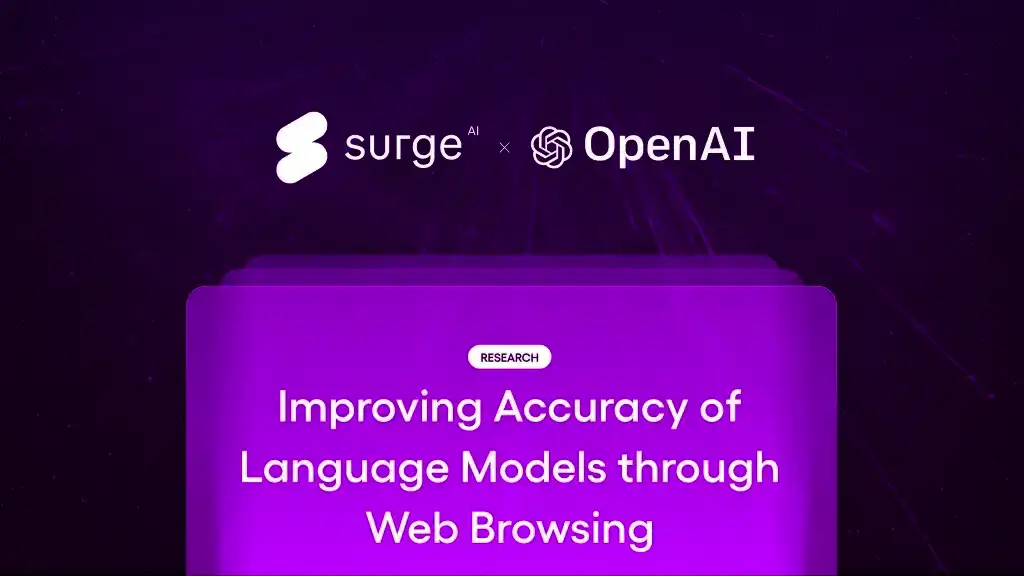Surge AI’s Quiet Transformation of Data Labeling

Vivi Carter · 1, August 2025
The New Era of Data Labeling
When Surge AI entered the scene in 2020, it was little more than a whisper among industry insiders. Yet by 2024, Surge had become the most formidable name in data labeling, racing past Scale AI in annual recurring revenue and establishing itself as the premium option for top-tier AI companies worldwide. Unlike competitors focused purely on scale, Surge AI has built its reputation on something harder to fake: genuinely high-quality, human-centric data.
The data labeling business is splitting into two camps. The first consists of massive BPOs—think TaskUs or Teleperformance—essentially labor agencies. The second camp, where Surge thrives, is AI-native: companies that automate much of the workflow but pair it with strict quality filtering, precise talent sourcing, and a relentless focus on nuance and accuracy.
A major axis of competition now revolves around human versus synthetic data. Industry wisdom once predicted synthetic datasets would become king, but reality has proved otherwise—especially in demanding fields like medicine, law, or sentiment analysis. Surge’s human-annotated data consistently outpaces synthetic datasets, which often falter under the ambiguity and messiness of the real world.
The boundaries of growth are also changing. As general-purpose AI sucks up most of the accessible internet, the new frontier is in vertical markets—healthcare, finance, compliance—where true expertise matters and annotation requires context and skill, not just scale.

Why Surge AI Was Founded
Edwin Chen, Surge AI’s founder, started the company out of frustration. While building ML models at Twitter, he ran into the bottleneck of slow, error-prone, and often misinformed data annotation. He envisioned a different approach: a handpicked team of domain experts and engineers, standardized high-touch workflows, and software to track and raise the bar for data quality.
Surge bootstrapped its way to market—profitable within the first month—by ignoring all the trend-chasing and focusing single-mindedly on what its early clients valued: data they could actually trust.
Edwin refused to sacrifice quality for the sake of speed or scale, betting instead on building lasting relationships with AI’s pickiest customers. That reputation soon spread: some of the most high-stakes AI research hinges on data only Surge can deliver.
The Tech and Team Behind the Results
Surge’s secret isn’t automation alone. It’s human expertise, amplified by custom machine learning tools. Subject-matter experts teach the AI how to spot edge cases, while Surge’s technology scales those insights efficiently to larger datasets. Humans focus on the ambiguous situations algorithms still can’t handle.
Native English speakers and culturally fluent annotators define Surge’s approach, especially for tasks involving humor, sarcasm, or context. The system emphasizes depth: capturing emotion, intent, and impact, not just flagging keywords.
Surge’s pipeline always considers context—thread history, community rules, and cultural signals, not just isolated lines of text. Their process pairs machine filtering with human review, red-teaming and dynamic bias checks, ensuring all data is fair, accurate, and regulatorily defensible.
And as privacy and compliance become central, Surge’s early investment in secure, auditable workflows (meeting GDPR, HIPAA, and most recently, the EU AI Act standards) now attracts risk-conscious clients—especially those operating in sensitive industries.
Speed, meanwhile, is not sacrificed for quality:
Surge’s APIs and adaptive review tools allow rapid onboarding and turnaround, letting clients launch new projects or iterations in days, not quarters.

What Surge Looks Like in Action
OpenAI tapped Surge to build GSM8K, a flagship math dataset for LLM benchmarking. By curating STEM-trained annotators and implementing multi-layered quality checks, Surge set a new industry standard—one now used by Google and others for testing reasoning skills in AI models.
Anthropic, meanwhile, turned to Surge as its data partner for training Claude, its next-generation language model. Surge’s edge came from its ability to deliver domain-expert, RLHF-caliber feedback at speed and scale—not just for generic dialogue, but also complex, specialized, and ethically nuanced tasks.
Meet the Team
Edwin Chen is known for his depth over visibility:
MIT-trained, ex-Google, ex-Twitter, and the first to expose label errors in Google's widely used GoEmotions dataset. He’s kept a low profile, letting Surge’s work speak for itself.
Andrew Mauboussin heads up engineering, bringing experience from Twitter and Harvard, where he designed global-scale annotation systems.
Bradley Webb directs product and growth, drawing on stints at Facebook and multiple SaaS growth stories to make sure Surge scales responsibly—never at the expense of quality.
Why Surge AI Matters
As generative AI races towards new frontiers, the companies with silent discipline and an obsession for data quality—not just buzz—are quietly building the core infrastructure of tomorrow. Surge’s story is as much about culture as technology: patient, precise, anti-hype, and relentlessly focused on long-term value.
In the end, the winner in the age of AGI won’t be the loudest—it’ll be the one whose data lets the world’s smartest models reason and decide, day after day, without fail. Surge AI is quietly making sure that happens.
Relevant Resources
